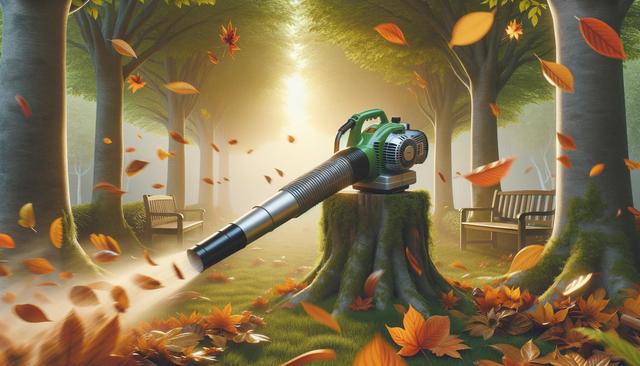Understanding the Types of Lawn Blowers
Lawn blowers come in various types, each designed to meet different needs depending on yard size, power requirements, and user preferences. The three main categories are handheld, backpack, and walk-behind blowers. Handheld models are compact and lightweight, ideal for small yards or quick clean-ups. Backpack blowers offer more power and longer runtime, making them suitable for medium to large yards. Walk-behind blowers, on the other hand, are typically used for commercial or large-scale residential properties due to their high capacity and ease of covering wide areas.
When selecting a blower, it is essential to consider the power source. Options include gas-powered, electric corded, and battery-operated models. Gas-powered units tend to provide stronger airflow and are favored for heavy-duty work, though they require more maintenance. Electric corded blowers are quieter and environmentally friendly but limited by the cord length. Battery-powered blowers strike a balance, offering portability and lower noise levels while being easy to start and use.
Key Features to Look for in a Lawn Blower
The efficiency of a lawn blower is determined by several key features. Two of the most critical specifications are airspeed (measured in miles per hour or MPH) and air volume (measured in cubic feet per minute or CFM). A higher MPH is effective for moving wet or stuck leaves, while a higher CFM will help clear larger areas faster. Finding the right balance between these two metrics can ensure optimal performance based on your yard’s requirements.
Other important features to consider include:
- Variable speed controls for adjusting power based on the task
- Noise level ratings for residential-friendly operation
- Ergonomic design with comfortable handles and harnesses
- Easy-start mechanisms, especially for gas models
- Mulching or vacuum capabilities for added functionality
Many of today’s models also include attachments and nozzles that enhance precision and maneuverability. Choosing a blower with these additional features can increase overall productivity and reduce time spent on yard maintenance.
Gas vs. Electric vs. Battery-Powered Blowers
Each power source has its pros and cons, and understanding them can help narrow down your choices. Gas-powered blowers have long been trusted for their strength and ability to handle large volumes of debris. However, they are louder, require fuel storage, and emit more pollutants. They are often preferred for rural or large suburban properties where power and endurance are priorities.
Electric corded blowers, while limited in range, are lightweight and require less maintenance. They are ideal for smaller yards with accessible power outlets. Battery-operated models have become increasingly popular due to advancements in battery technology. They offer quiet operation and freedom of movement, though they may require additional batteries for longer jobs.
When evaluating these options, consider your priorities in terms of convenience, maintenance, and environmental impact. Battery-powered models are gaining popularity for striking a balance between performance and eco-friendliness, especially in urban or noise-sensitive areas.
Maintaining Your Lawn Blower for Longevity
Proper maintenance can significantly extend the life and performance of your lawn blower. Regularly inspecting and cleaning the blower ensures it operates efficiently and safely. For gas-powered models, routine maintenance involves checking fuel levels, cleaning or replacing air filters, and inspecting spark plugs. It’s also important to store them properly during off-seasons to prevent fuel degradation and corrosion.
Electric and battery-powered blowers require less maintenance but still benefit from occasional inspections. Make sure to:
- Clean the intake vents and nozzles to prevent blockages
- Check and charge batteries as recommended by manufacturers
- Store in a dry, sheltered area to avoid moisture damage
- Inspect cords and connections for any signs of wear
Regular upkeep not only maintains performance but also ensures safety during operation. Always refer to the user manual for specific care instructions tailored to your model.
Making the Right Choice for Your Yard
Choosing the right lawn blower ultimately comes down to your yard size, typical workload, and personal preferences. A small suburban lawn with light leaf fall may only require a simple handheld electric model. In contrast, a heavily wooded property will benefit from the power and capacity of a backpack or walk-behind blower. Matching your blower type to your specific needs will help you get the job done more efficiently and with less effort.
Budget also plays a role, but investing in a well-regarded model with useful features can save time and money in the long run. Consider the availability of replacement parts, customer support, and warranty options when making your purchase. If possible, try out different models in-store to evaluate weight, balance, and ease of use before committing.
By understanding your yard’s needs and comparing different types of blowers, you can make an informed decision that simplifies leaf removal and enhances lawn care throughout the seasons.







